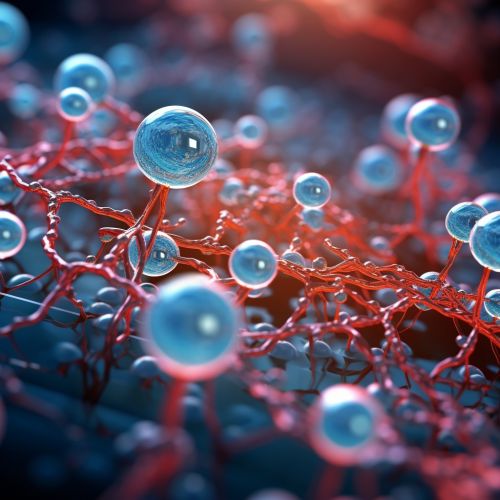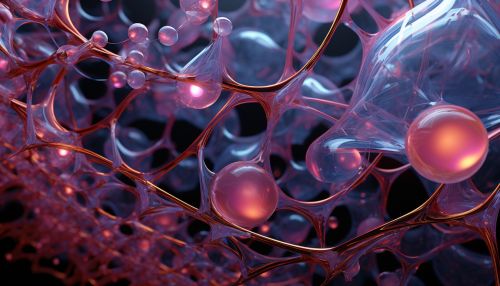Purine Metabolism
Introduction
Purine metabolism refers to the biochemical pathways involved in the synthesis, interconversion, and degradation of purines, which are key components of cellular energy systems (like ATP and ADP), signaling systems (like GTP, cAMP, cGMP), and building blocks of DNA and RNA.
Purine Synthesis
Purine synthesis begins with the precursor molecule ribose-5-phosphate, which is converted to 5-phosphoribosyl-1-pyrophosphate (PRPP) by the enzyme PRPP synthetase. The purine ring is then built upon this PRPP molecule in a series of reactions that involve several different enzymes and intermediates.
De Novo Synthesis
In de novo purine synthesis, the purine ring is built from scratch. The first step in this process is the formation of 5-phosphoribosylamine from PRPP by the enzyme amidophosphoribosyltransferase. This is the rate-limiting step of the pathway and is subject to feedback inhibition by the end products, AMP and GMP.


The purine ring is then constructed piece by piece by the addition of atoms from various sources, including the amino acids glycine, glutamine, and aspartate, as well as formate ions derived from the folate-mediated one-carbon pool. The end product of de novo purine synthesis is inosine monophosphate (IMP), which can then be converted to either AMP or GMP.
Salvage Pathway
The salvage pathway of purine synthesis involves the recycling of purines from degraded DNA and RNA to form new purine nucleotides. This pathway is particularly important in tissues that have a high turnover of nucleic acids, such as the bone marrow and the immune system.
The key enzyme in the salvage pathway is hypoxanthine-guanine phosphoribosyltransferase (HGPRT), which catalyzes the conversion of hypoxanthine to IMP and guanine to GMP. Another enzyme, adenine phosphoribosyltransferase (APRT), converts adenine to AMP.
Purine Interconversion
Purine interconversion, or purine nucleotide interconversion, refers to the biochemical processes that allow for the conversion of one purine nucleotide to another. This is crucial for maintaining the balance of purine nucleotides in the cell.
The enzyme adenylosuccinate synthetase converts IMP to adenylosuccinate, which is then converted to AMP by adenylosuccinate lyase. The conversion of IMP to GMP involves two steps, catalyzed by the enzymes IMP dehydrogenase and GMP synthetase.
Purine Degradation
Purine degradation is the process by which purine nucleotides are broken down in the body. This process begins with the deamination of AMP and GMP to form IMP and xanthosine monophosphate (XMP), respectively. These are then converted to hypoxanthine and xanthine, respectively, by the action of nucleoside phosphorylases.
Xanthine is further oxidized to uric acid by the enzyme xanthine oxidase. Uric acid is the final product of purine degradation in humans and is excreted in the urine. In other mammals, uric acid is further degraded to allantoin by the enzyme uricase.
Disorders of Purine Metabolism
Disorders of purine metabolism can lead to a variety of clinical conditions. For example, deficiencies in HGPRT can lead to Lesch-Nyhan syndrome, a severe neurological disorder characterized by self-mutilation behaviors.
Gout is another condition related to purine metabolism. It is caused by the overproduction or underexcretion of uric acid, leading to the formation of uric acid crystals in the joints and tissues, causing inflammation and pain.
